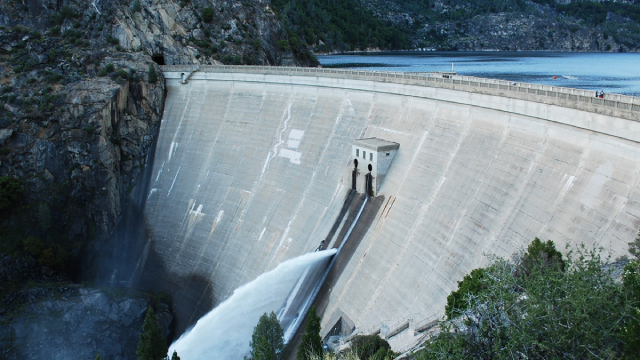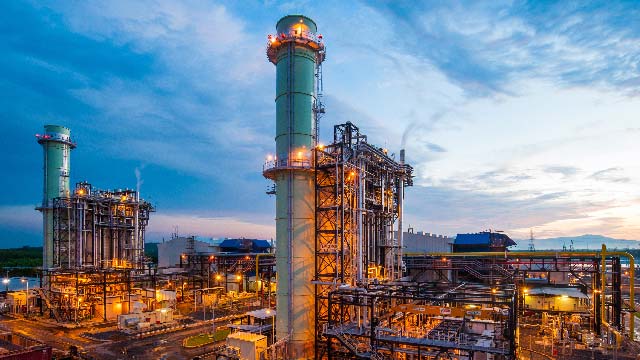This is the third in a series of insights called “Moving from Sustainability Talk to Action.” As the market moves toward net-zero, carbon-free and low-carbon fuels infrastructure projects (fueled by the promise of tax credits) are key for realizing decarbonization goals. These semi-large infrastructure projects will need to navigate through the air permitting waters prior to the start of construction. This insight addresses the management of air quality and permitting risks on these projects.
Ajay Kasarabada, P.E, AVP and Director – Environmental Solutions, Black & Veatch
Mike Rinkol, P.E., Subject Matter Lead – Air Regulations & Sciences, Black & Veatch
The Inflation Reduction Act (IRA) was designed to animate the market to rapidly deploy infrastructure on the ground to meet ambitious decarbonization goals. While technological advancements are happening to electrify the ecosystem with green electrons, vast chunks of the economy still rely on conventional fossil fuels. During this transitionary period, owners, operators, and developers, as well as interested financial institutions, increasingly are considering investment in alternative fuels such as renewable hydrocarbon fuels from biomass feedstocks – and blue fuels sourced from hydrocarbon feedstocks with carbon capture and sequestration – to provide carbon-free or low-carbon energy sources to fuel the economic engine. The manufacturing processes that produce these alternate fuels use complex unit operations and are typically classified as chemical plants, which emit air emissions in addition to carbon dioxide (CO2).
Examples of carbon-free and low-carbon fuels manufacturing projects:
Renewable gasoline
Renewable alcohols (ethanol, butanol, methanol, mixed alcohols)
Sustainable aviation fuel (SAF)
Blue hydrogen and ammonia from methane with carbon capture and sequestration
Syngas and renewable natural gas from biomass feedstocks
These proposed fuel-manufacturing plants (fuels projects) are being evaluated for risk factors such as economics, reliability, operational flexibility and stability as part of initial conceptual studies and Project Definition Rating Index (PDRI) reviews. However, the environmental considerations – specifically the impact of air quality permitting requirements on project economics, design and schedule – are typically not considered until later in the project planning process. If we want to see these fuels projects implemented and operational to achieve further decarbonization, it is important that air quality and permitting metrics are not ignored.
Clearing the Air on Permitting Requirements
The Clean Air Act Amendments of 1990 (CAAA) define stationary sources of air emissions as “any building, structure, facility or installation which emits any air pollutant.” Air construction permits are required prior to construction and operation of stationary sources and modification to existing stationary sources. The CAAA also defines modification as “any physical change in, or change in the method of operation of, a stationary source which increases the amount of air pollution emitted by such source or which results in the emissions of any air pollutant not previously emitted.” Fuels manufacturing operations have several stationary sources with air emissions. Consequently, air construction permits are required prior to construction and operation of these facilities.
The CAAA regulates six criteria air pollutants and 188 hazardous air pollutants (HAPs). The six criteria air pollutants are nitrogen dioxide (NO2), sulfur dioxide (SO2), carbon monoxide (CO), particulate matter (PM10 and PM2.5), ozone (volatile organic compounds or VOCs are considered surrogates for ozone and are regulated), and lead (Pb). In addition to these pollutants, some states also regulate state specific air toxics.
Affected parties and facilities must acquire an air construction permit with minimal requirements and overcome the least number of permitting risks. Air construction permits are classified as minor and major source construction permits depending upon the amount of emissions change from either a new installation or modification to an existing installation. In general, minor source air construction permits have the fewest permitting hurdles to overcome and regulatory requirements to meet. Major source permits are implemented under the federal CAAA New Source Review (NSR) provisions under two programs: the Prevention of Significant Deterioration (PSD) program outlined in 40 CFR 52.21, and the Nonattainment NSR (NNSR) program outlined in 40 CFR 51 and 52. PSD regulations apply to major stationary sources and major modifications at major existing sources undergoing construction in areas designated as attainment or unclassifiable. The PSD regulations are designed to ensure that the air quality in attainment areas does not significantly deteriorate or exceed the National Ambient Air Quality Standards (NAAQS) while providing a margin for future industrial and commercial growth. NNSR applies in regions that are classified as nonattainment for a particular pollutant(s).
The PSD program sets forth specific threshold levels, referred to as significant emission rates (SER) that are used to determine if an emissions increase constitutes a significant emissions increase for each PSD pollutant. The SERs for PSD pollutants that are typically of concern for facilities with combustion units are summarized in Table 1.
Table 1: PSD Significant Emission Rates
Pollutant | Significant Emission Rate (tpy) |
|---|---|
PM | 25 |
NOx | 40 |
SO2 | 40 |
PM10 | 15 |
CO | 100 |
VOC (surrogate for ozone) | 40 |
Sulfuric Acid Mist | 7 |
Lead | 0.6 |
Fluorides | 3 |
At existing major PSD sources, PSD is applicable if the emissions change results in a significant emissions increase and a significant net emissions increase (details about PSD netting is beyond the scope of this insights article).
The primary provisions of the PSD regulations necessitate a thorough review of major modifications and new major stationary sources before construction can begin, ensuring compliance with the NAAQS, the applicable PSD air quality increments, other air quality-related values and the requirements to apply Best Available Control Technology (BACT) to minimize the emissions of air pollutants from these sources. For nonattainment areas, as mentioned earlier, major source review falls under NNSR provisions. Major source thresholds for nonattainment areas are dependent on the severity of nonattainment classification and are lower than the PSD major source thresholds. NNSR major source review mandates the implementation of Lowest Achievable Emission Rate (LAER), which is more stringent than BACT, and the purchase of offsets or emission reduction credits for the nonattainment pollutant exceeding the major source threshold. Additionally, an Ambient Air Quality Impact Analysis (AAQIA) may be required.
How does air permitting impact fuels projects?
There is a strong interdependence between air permitting and process design for fuels projects. Several iterative steps may be needed to ensure development of an optimal process and an installation which can smoothly sail through the air permitting waters. As mentioned earlier, the goal for most interested parties is to minimize the air permitting hurdles that need to be overcome prior to obtaining an air construction permit – or in other words qualify for permitting as a minor source. Given the IRA’s tax credit triggers related to life-cycle carbon (studied using the GREET model), it’s also important to consider how this may influence conceptual design to minimize life cycle carbon and maximize production tax credits. Let’s take a deeper look at the ways in which air permitting nuances may impact project characterization, economics and permitting schedules.
Project Characterization
Facility location, size and layout must be considered, including:
Feasibility of locating a source in an attainment or nonattainment area, proximity of the source to sensitive receptors (i.e., schools, nursing homes, environmental justice communities, etc.), locating at a greenfield site or co-locating at an existing plant or adjacent to a downstream fuel client facility. Colocation can trigger additional reviews associated with contractual and operational relationship between the two collocated parties, including common ownership and control, “but-for” relationships, etc.
How big of an emissions unit based on product output can be permitted without tripping major source thresholds or violating ambient air impact thresholds.
How many units can be built, finding room to install additional units or equipment or leaving space for future process trains.
Negotiating guaranteed emission rates from vendors (i.e., catalyst manufactures, air quality control equipment OEMs, etc.) to meet potential permit limits.
Project Economics
Project economics for a typical fuels plant may include costs for raw materials, transportation, carbon capture and sequestration, electricity rates, heat rates and annual operational costs, as well as potential fuel savings in their economic models to determine project viability. It’s also important that along with the process design team, the air permitting staff or permitting consultants interact closely with the project economists to include other capital and operating costs associated with add-on emissions control equipment, fuel pre-treatment equipment, and costs for buying emission offsets (in nonattainment areas only) into the economic model. Costs for obtaining offsets could be very high depending on the type of nonattainment pollutant for which the offsets are required and the prevailing market rates for such offsets. Similarly, add-on emissions control capital and operational costs can be high, and a detailed economic analysis may be necessary to justify inclusion or exclusion of such technologies as part of the project design.
Project Schedule
Having established that obtaining an air construction permit is necessary prior to beginning construction and operation of fuels projects, it is imperative to allocate sufficient time in the project schedule and planning. This includes time for conducting iterations during the conceptual design phase when the project is being optimally characterized, time for preparing air construction permit application documents, and time for the agency review process.
Minor source permit reviews typically take three to six months for approval after a complete application has been submitted. Major source review can take from 12 to 24 months for agency review and approval. The time budgeted for air permitting can be used to develop a sound air permitting strategy, including time to engage the air permitting agencies early with the nature of the project being planned, time to engage the public with the benefits of the project and time for the air permitting staff or consultant to conduct all relevant and required analyses and assemble the permit application for submittal to the state agencies for their review and approval.
Finally, in order to accommodate project schedules, a sequence of projects (for example, phased installation of process trains) all planned within a phased schedule cannot be broken down into segments so that each segment would be below the major source thresholds, when the project as a whole could exceed them. This concept is called segmentation for avoidance of major source review and is not allowed.
The Path Ahead
Air quality regulations can add complexity, costs and increased permitting time to a fuels project and should be addressed upfront in the project planning process. Air quality permitting requirements that include BACT and/or AAQIA may require additional pollution control equipment and fine-tuning of the project conceptual design, which can impact project cost and complexity in the permit application preparation and processing. Considerations such as colocation, common ownership and control, PSD avoidance via phasing projects and segmentation also add complexities and can increase the time to obtain an air construction permit, which must be obtained before a facility can commence construction.
Successful deployment of carbon-free and low-carbon fuels manufacturing projects requires air quality be integrated as a significant component of the overall fuels project planning phase. Navigating these waters can be complicated, especially as development and investment is spurred by tax incentives, which is why it’s vital to plan for air permitting prior to the start of construction.
References:
CAAA §111(a)(3)
CAAA §111(a)(4)
The air quality in a given area is designated as being in attainment for a pollutant if the monitored concentrations of that pollutant in the ambient air are less than the applicable National Ambient Air Quality Standards (NAAQS) or is designated as unclassifiable if sufficient monitoring data are not available to make an attainment decision. A given area is classified as non-attainment for a pollutant if the monitored concentrations of that pollutant in the ambient air in the area are above the NAAQS.
A given area is classified as nonattainment for a pollutant if the monitored concentrations of that pollutant in the ambient air in the area are above the NAAQS.








